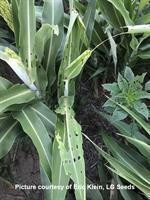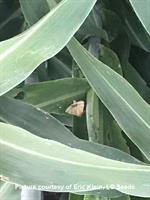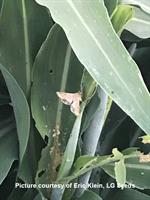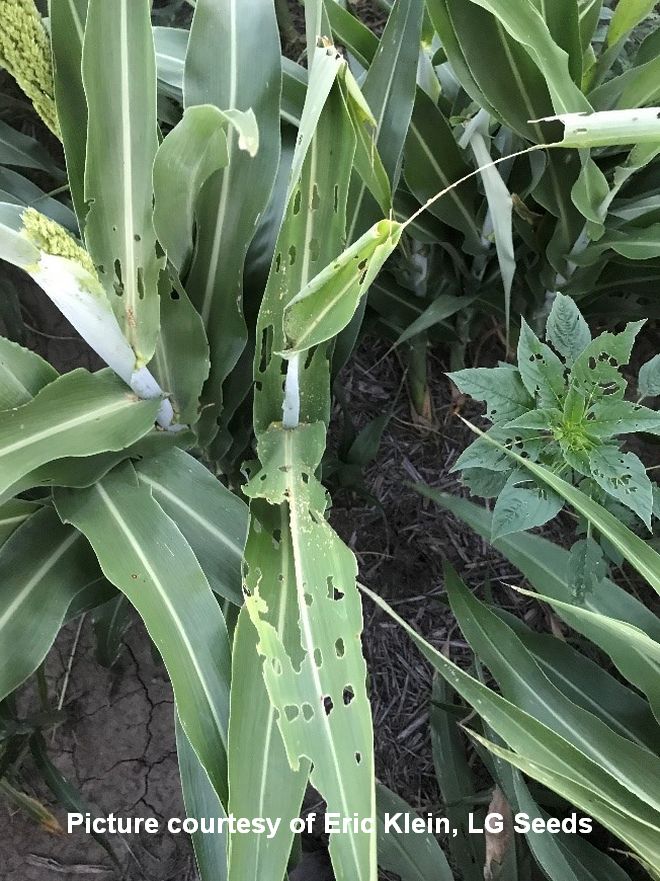AGRONOMICSUPPORT
YOU CAN TAKETO THE FIELD
Sorghum Headworm
Across the Coastal Division we are experiencing a major pest infestation affecting the grain sorghum crop. Sorghum headworm levels are increasing from northern Texas to central Kansas currently. Sorghum earworm is a broad term referring to three types of caterpillars that will feed in the sorghum head. Corn earworm (Helicoverpa zea), fall armyworm (Spodoptera frugiperda), and sorghum webworm (Nora sorghiella) are the larvae that can all be referred to as sorghum headworm. Recently both corn earworm and fall armyworm have been identified in Kansas feeding on sorghum, however most of the damage being done currently is by corn earworm larvae.



Life Cycle:
Corn earworms have multiple generations throughout the summer. The first generation will lay eggs in corn around the time the corn is pollinating, and larvae will feed in the ears. Not as common, but also possible, is laying eggs in sorghum currently. This will result in feeding in the whorl of the plant that looks similar to that of stalk borer feeding in corn. As the larvae mature, they will move to the ground where they burrow to finish the process of becoming a moth. Once emerged, they will look for another crop to lay eggs in. Late planted corn, soybeans, and grain sorghum are all affected by this 2nd generation.
Scouting:
When scouting, start in areas that are near corn fields where first-generation corn earworms were present. Seeing moth flights increase is important to scouting but isn’t the final indication if treatment is needed. Moths will lay thousands of eggs but not all of these will hatch. To get true levels, counts must be done of larvae feeding in the head. The preferred scouting method is selecting 40 plants from various locations in the field. Then, using a bucket, shake these heads to dislodge the feeding caterpillars. Once counts are done, if the average levels are 3-5 larvae per plant, you have reached the economic threshold.
Treatment:
Lepidopteran insects typically are easy to kill with several different classes of insecticides. One major consideration when spraying grain sorghum is local sugarcane aphid levels. Using the tracker at https://www.myfields.info/pests/sugarcane-aphid can help to know these levels. If sugarcane aphids are possible, it is necessary to step up the type of insecticide used for control. Group 3 insecticides can reduce the number of beneficial insects and in turn raise the level of sugarcane aphids. Instead, using insecticides from Group 5 or Group 28 will give good control, without affecting beneficial insect levels.
For more information on the great line up of Golden Acres® sorghum products or on this topic, contact your local LG Seeds representative.
Additional Information and References:
Headworms from the Sorghum Checkoff http://www.sorghumcheckoff.com/newsroom/2016/03/28/headworms/
Corn Earworm Insect Fact Sheet by Kelly Cook and Rick Weinzieri University of Illinois https://ipm.illinois.edu/fieldcrops/insects/corn_earworm.pdf
Sorghum Insect Management Jeff Whitworth and Holly Davis Kansas State University https://www.agronomy.k-state.edu/extension/documents/sorghum-schools/2014-sorghum-school/Whitworth-Davis-Sorghum-2014%20.pdf
Note: The information in this issue is based upon field observations and third-party information. Since variations in local conditions may affect the information and suggestions contained in this issue, LG Seeds disclaims legal responsibility therefore. Always read and follow label instructions.
Golden Acres and design and LG Seeds and design are trademarks of AgReliant Genetics, LLC.
Download a copy of this Technical Bulletin: Tech_392 - Sorghum Headworm






Technical Team Agronomist